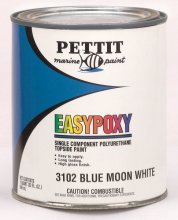Best Marine Paint
 As fiberglass gelcoats age they have a tendency to oxidize and show the wear and tear of scuffs and scrapes built up over the years. Perhaps the most readily useful of watercraft handlers will see that an occasion comes whenever gelcoat finishes succumb to the unrelenting attack through the marine environment.
As fiberglass gelcoats age they have a tendency to oxidize and show the wear and tear of scuffs and scrapes built up over the years. Perhaps the most readily useful of watercraft handlers will see that an occasion comes whenever gelcoat finishes succumb to the unrelenting attack through the marine environment.
There are many kinds of layer systems that differ dramatically both in cost and whatever they deliver. These are normally taken for traditional single-part enamels which can be very easy to use, to sophisticated two-part systems. Decades ago resin producers saw that urethane and epoxy based coatings had programs as marine paints. Epoxy topcoats had great glue attributes but little opposition to UV degradation. The answer arrived in the form of multi-coat systems which use an epoxy primer and linear polyurethane when it comes to finish, along with other methods. The two-part procedure was greatly simplified but nevertheless continues to be predominantly a professionally sprayed product.
Fortunately that do-it-yourselfers are now able to choose from both single and two-part methods that deliver near professional-quality finishes and are an easy task to use by brush and roller. Here’s a quick run-down of what to expect. You’ll have to consider the task as a ladder that must definitely be climbed one-step at any given time. Each rung is inscribed with terms such as clean, sand, place fill, sand, prime, sand, paint, sand, and paint yet again. Notice the repetition regarding the term sand, above a laid-back hint toward exactly what lies ahead. Inside advantage line for ardent do-it-yourselfers there’s cash to-be conserved and a rather genuine feeling of success. These step-by-step method works well with any area of your watercraft, but keep in mind that now products are developed frequently and you ought to always stick to the instructions and guidelines of item you employ. For an illustration of this what kinds of items are offered see
Preparation Work
Cleaning the area become painted might appear superfluous considering that the area is usually to be sanded, although actual sanding process can drive contamination deeper into the gelcoat. To avoid this, clean and wax the hull with water and soap and finally do a solvent wipe. It’s vital that you wear gloves and cover any skin confronted with chemical compounds. Throughout the solvent wipe down, frequently change the cloth made use of and change to a new one often to avoid smearing area waxes and other contaminants. Make note of surface flaws while cleaning.





